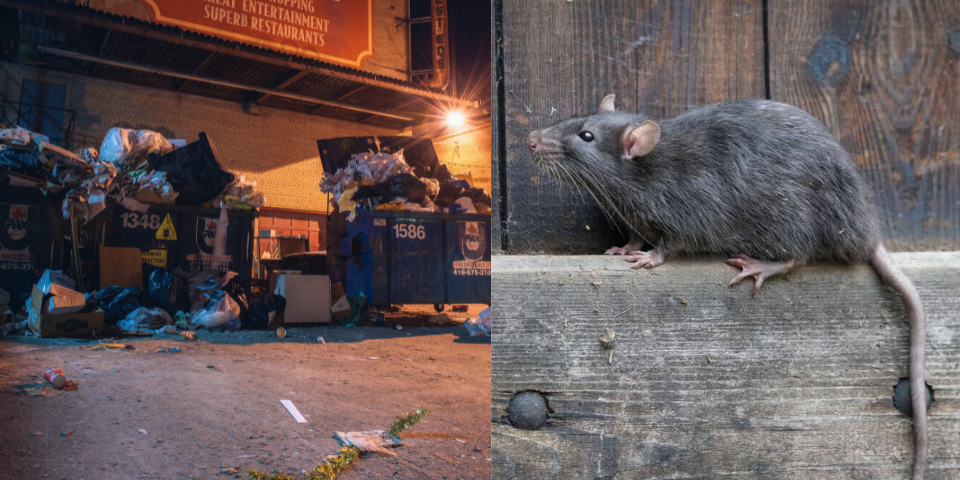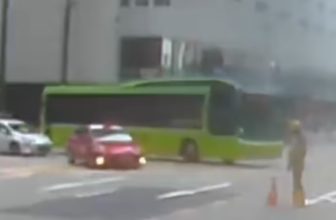
Rats are becoming an increasing problem in Singapore. Toa Payoh, Tampines, and Hougang have reported the most rat sightings.
Twice recently, while jogging near her home, Shantel Lim was startled by a rat scurrying across her path. Besides the initial shock, she felt anxious about the possibility of being bitten. “I’d have to go to the hospital immediately, as rats carry many pathogens, viruses, and bacteria,” said the 24-year-old.
It’s not just a solitary rat or two that she encounters in her Tampines Street 33 estate. She frequently sees them in the void deck, near rubbish chutes, and in drains. Recalling an instance where she saw five rats, she noted, “They were really big and making loud squeaking sounds.”
She has even spotted up to eight rats in a pack, describing the situation as “unsanitary, dangerous, and disgusting.”
“It’s a big problem in Tampines because it’s not only me who’s experienced this. My friend who lives nearby said rats are a common sighting around her block as well,” Shantel said.
Within 10 days, they received 320 reports, including photos and videos. The sightings, which included playgrounds, lift lobbies, and even supermarkets, were collated to create a rat map, highlighting the worst-affected areas.
Tampines was indeed one of the top three hotspots, with 42 sightings out of a total of 503 map entries. Leading the list was Toa Payoh, with 54 sightings, followed by Hougang, with 25 sightings.
Talking Point investigates the extent of Singapore’s rat problem and what measures are being taken to address it in this Thursday’s episode. Tune in at 9:30 p.m. on Mediacorp’s Channel 5 to learn more.

TOWN COUNCILS RESPOND
The town authorities in charge of the three aforementioned estates said that they were keeping an eye on rat activity and that they were conducting surveillance. They also emphasized that, in order to solve the problem, they are collaborating with a number of organizations, including the National Environment Agency (NEA).
“To maintain our estate and public spaces clean, we also take a holistic approach, enlisting cooperation from food outlets, supermarket operators, community members, and authorities managing construction sites for infrastructure projects,” the Tampines Town Council stated.
“Efforts must be made consistently by all parties to effectively address the rat issue.”
The town council said, “positive results in the reduction of rats’ activities” have resulted from these efforts in addition to a “comprehensive and sustained rat surveillance and control programme” it has executed with the NEA.
Since January, surveillance and culling operations in Toa Payoh, where Bishan-Toa Payoh Town Council (BTPTC) has hired professional pest control services, have increased.
In response to our inquiries, BTPTC chairperson Chong Kee Hiong stated, “Ground treatment is done almost daily at places where rodent burrows are detected persistently, and culling operations are conducted at least every fortnight.”
In order to “eradicate the rats,” ground treatment involves regularly inserting baits into the burrows and then sealing any that are no longer in use. This procedure is carried out again for newly dug or active burrows.
Exercises for culling are also done at night. This entails setting up cage traps at key places like bin chutes, central garbage chutes, and bin centers.
In order to reduce possible food supplies for the rats, Chong stated, “the town council is simultaneously seeking the cooperation of nearby coffee shops and hawker centers on proper food waste management.”
BTPTC will continue to “seek out new or improved methods to address the rodent issue,” and inspection and enforcement activities at Toa Payoh’s food outlets are conducted in cooperation with the Singapore Food Agency (SFA) and the New England Association (NEA).
“We also plan to help ground floor residential units keep rodents out,” Chong stated. “Maintaining our estate safe and clean for our residents is a priority for the town council.”
In response, Aljunied-Hougang Town Council (AHTC) repeated the sentiments of the other town councils by stating that it undertakes “thorough site investigations to identify the underlying causes” “in light of the current trend of rodent sightings across Singapore.”
In order to implement effective trapping strategies that are suited to the specific species of rodents present, the report stated, “Our investigative process includes identifying potential sources of portable food, assessing the storage of bulky waste that may create conducive environments for harboring rodents,” among other things.
“As rats are driven from their harboring areas, there is increased vigilance in areas where major construction works are underway, such as the Cross Island Line tunnelling works in Hougang.”
Additionally, AHTC “undertakes educational outreach” to promote appropriate food waste disposal practices, such as “securely bagging leftover food and disposing of it into and not beside rubbish bins,” neither feeding birds, nor leaving food unattended or behind in public locations.
The municipal council stated, “Such careless disposal of food waste could potentially cause rats to multiply rapidly.”
Though it “implies a surge in rat population, which may not necessarily be the case in every instance of (rats being sighted) but which causes undue public alarm,” the AHTC issued a warning against using the word “rat infestation.”




